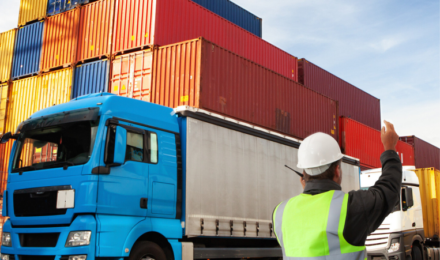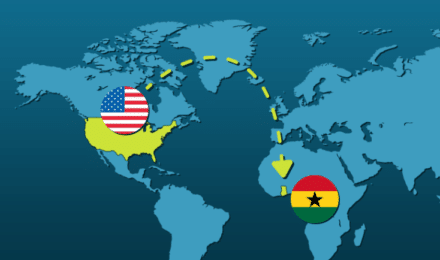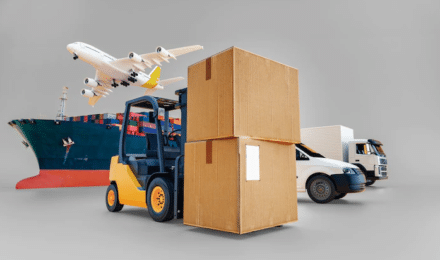Logistics is a critical component of global trade. Businesses of all sizes require efficient and trustworthy transportation networks to move goods across the globe. As international trade increases, traditional delivery methods are expanding to meet new expectations. One such development is cross trade, which involves shipping goods between two countries by a third party, without the involvement of the seller or buyer.
Cross trade allows businesses to facilitate international trade without physically handling the goods themselves. If you’re unfamiliar with cross trade, it can seem like a complex concept. But, it’s a relatively simple way to streamline global trade and reduce costs for businesses.
In this article, we’ll explore everything you need to know about cross trade in logistics. Including what cross trade shipment is, how it works, and why it’s important. Whether you’re a business owner looking to expand your global reach or simply curious about the world of logistics, read on to learn more.
What does cross mean in trade?
In trade, the term “cross” refers to moving goods between two countries by a third party, without the direct involvement of the seller or buyer. We commonly known this process as cross trade or third-country trade.
To understand cross trade, let’s take an example. Imagine that a company in the United States wants to import goods from China. Traditionally, the company would need to handle the logistics of getting the goods from China to the US. This would involve coordinating with Chinese suppliers, arranging transportation, and dealing with customs clearance. However, with cross trade, the company could instead work with a third-party logistics provider to have the goods shipped directly from China to the US, without ever touching US soil.
In this scenario, the third-party logistics provider would handle all the logistics of the shipment. Including coordinating with the Chinese supplier, arranging for transportation, and dealing with customs clearance. The US company would simply pay for the goods and receive them at their final destination—without needing to worry about the details of the shipment.
Overall, cross trade can be a cost-effective and efficient way to facilitate international trade. Especially for businesses that are looking to expand their global reach but don’t have the resources to handle logistics on their own.
What is cross trade in logistics?
Cross trade, also known as third-country trade, is a logistics practice in which goods are shipped directly between two countries by a third-party logistics provider, without the direct involvement of the seller or buyer. Cross trade allows businesses to facilitate international trade without ever having to physically handle the goods themselves.
Traditionally, a company would need to handle the logistics of getting their goods from another country. This would involve coordinating with a freight forwarder, arranging transportation, and dealing with customs clearance. However, with cross trade, the company could instead work with a third-party logistics provider to have the goods shipped directly.
The third-party logistics provider would handle all the logistics of the shipment. Including coordinating with the company and its customer abroad, arranging for transportation, and dealing with customs clearance. The customer would receive the goods directly from the logistics provider, without the company ever having to handle the shipment themselves.
Cross trade is a valuable tool for businesses looking to streamline their logistics and reduce costs. Especially for those that don’t have the resources to handle international shipping on their own. However, it’s important to work with a trusted logistics provider that has experience with cross trade and understands the complexities of international trade.
Adonai Shipping Ltd is a top cross trade logistics provider, working with hundreds of other trusted agents in one global network: OBL Cross Trades.
What is a cross trade shipment bill of lading?
A cross trade shipment bill of lading is a legal document serving as proof of shipment and ownership of goods in cross trade shipments. It contains important information, such as the origin and destination of the shipment, the type and quantity of goods being shipped, and the terms of the shipment.
The cross trade shipment bill of lading is issued by the logistics provider and serves as a contract between the logistics provider, the seller, and the buyer. It’s important to ensure that the information on the cross-trade shipment bill of lading is accurate and up-to-date to avoid any issues with customs clearance.
What is the difference between cross trade and block trade?
The process of cross trade involves a third-party logistics provider transporting goods between two countries. Block trade is a term used in finance to describe a transaction involving multiple securities, usually for a discounted price. In other words, block trade involves the buying or selling of a large block of securities outside of the open market, often to a single buyer or seller.
While cross trade and block trade are very different concepts, they share some similarities. They both involve the facilitation of trade between two parties without the direct involvement of the traditional intermediaries in the process. However, while cross trade involves the physical movement of goods, block trade involves the buying or selling of securities.
The cross trade process
The cross-trade procedure involves several key steps to ensure that goods are shipped safely and efficiently between two countries. The process begins with the buyer and seller agreeing on the terms of the sale.
When the terms of the sale are set, the logistics provider will arrange shipment. This may involve coordinating with multiple transportation providers, such as ocean carriers and trucking companies.
Here are the steps in the cross trade shipment procedure:
- Agree on terms: The buyer and seller agree on the terms of the sale, including the price of the goods and the delivery terms.
- Notify logistics provider: Once the terms of the sale have been agreed upon, the logistics provider is notified and arranges the shipment of the goods.
- Coordinate transportation: The logistics provider coordinates with multiple transportation providers. Such as ocean carriers and trucking companies, to ensure that the goods are transported safely and efficiently.
- Prepare the cross trade shipment bill of lading: One of the most important documents in the cross trade process is the cross trade shipment bill of lading. This document serves as proof of ownership of the goods and outlines the terms of the shipment. The logistics provider works to ensure that the information on the bill of lading is accurate and up-to-date.
- Handle customs clearance: The logistics provider handles any necessary customs clearance procedures. Thus ensuring that all necessary paperwork and fees are paid and that the goods can be shipped legally.
- Communicate status: Throughout the cross trade process, communication between the logistics provider, the buyer, and the seller is key to ensuring that everything runs smoothly. The logistics provider should keep all parties informed of the status of the shipment and any issues that arise, and should work to resolve any problems quickly and efficiently.
Overall, working with a logistics provider that specialises in cross trade can help to streamline the process and ensure that goods are shipped safely and efficiently between two countries.
How do you identify cross trade?
If you want to know what cross trade is, you can identify a few key factors determining the cross trade. Several key factors can be used to recognise cross trade shipments. Here are a few things to look for:
- Different origin and destination countries: Cross trade shipments involve goods being shipped from one country to another, with the buyer and seller in different countries than the origin and destination of the goods.
- Third-party logistics provider: In cross trade, a third-party logistics provider is typically involved in arranging the shipment of the goods. This provider will work with multiple transportation providers to ensure that the goods are transported safely and efficiently.
- Cross trade shipment bill of lading: The cross trade shipment bill of lading is an important document that serves as proof of ownership of the goods and outlines the terms of the shipment. Look for this document to confirm that a shipment is a cross trade.
- Different currency used: Because cross trade shipments involve goods being sold between buyers and sellers in different countries, it is common for different currencies to be used in the transaction. Look for differences in currency to identify a cross trade shipment.
By identifying these factors, you can determine whether a shipment is a cross trade and ensure that it is handled appropriately.
Cross trade example
An example of a cross trade is when a company in one country wants to purchase goods from a supplier in another country, but the goods need to be shipped to a buyer in a third country. For instance, a company in the US may want to buy goods from a supplier in China, but the goods need to be shipped to a buyer in Europe.
To make this type of shipment possible, a logistics provider that specialises in cross trade can be engaged to coordinate transportation, arrange necessary customs clearance procedures, and handle communication among all parties involved. This ensures that the goods are shipped safely and efficiently, even though the buyer, seller, and final destination are in different countries.
OBL Cross Trades Network
Adonai Shipping Ltd is a logistics agent, part of the trusted cross trades network OBL.
OBL Cross Trades Network is a global logistics network that specialises in cross trade. With over 30 years of experience in the logistics industry, the OBL Cross Trades Network has a vast network of partners and agents around the world. This way, OBL ensures seamless transportation and logistics solutions for cross trade shipments.
The network provides a wide range of logistics services, including ocean, air, and land transportation, customs clearance, warehousing, and distribution. OBL Cross Trades Network also offers personalised customer service and online tracking tools to ensure that clients can stay informed of their shipment’s status at all times.
By leveraging its expertise in cross trade logistics and its extensive network of partners, OBL Cross Trades Network can provide cost-effective and efficient transportation solutions for businesses looking to import or export goods to and from any corner of the world.
Conclusion
Cross trading has become an essential part of the logistics industry, providing businesses with greater flexibility and access to a wider range of goods and services. Understanding the cross trade process and working with a reliable logistics provider can help you streamline your supply chain and achieve your business goals. As global trade continues to evolve and become more complex, cross trade will continue to play a vital role in enabling businesses to grow and thrive. By staying informed about cross trade and working with trusted logistics partners, businesses can stay ahead of the curve and achieve success in the global marketplace.






